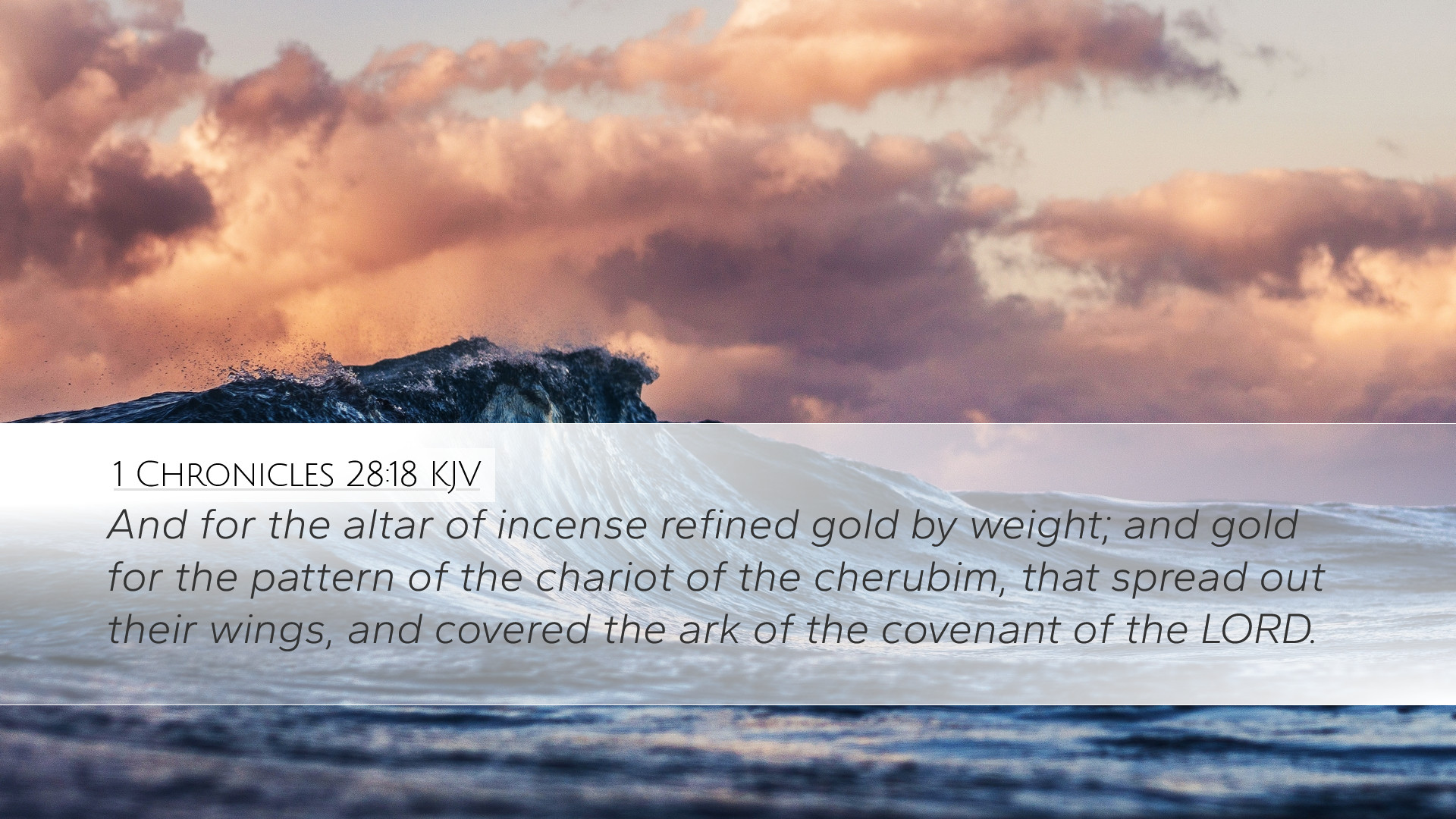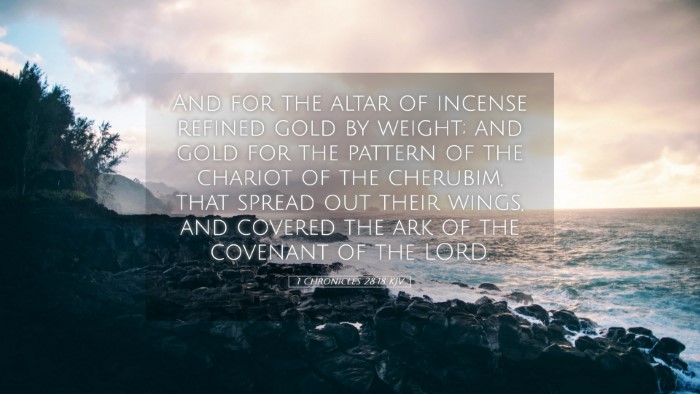Commentary on 1 Chronicles 28:18
1 Chronicles 28:18 states:
"And for the altar of incense, refined gold by weight; and the gold for the pattern of the chariot of the cherubim, that spread out their wings, and covered the ark of the covenant of the Lord."
Contextual Background
This verse is part of King David’s instructions to Solomon regarding the construction of the temple. David gathered the leaders of Israel and imparted his vision for the temple, emphasizing the importance of its holiness and design. The temple was not merely a building; it was to be the dwelling place of God among His people.
Insights from Public Domain Commentaries
Matthew Henry’s Commentary
Matthew Henry highlights the significance of the materials used in the construction of the temple. He notes that the "refined gold" signifies purity and the highest quality, implying that the worship of God should be treated with utmost reverence. Henry comments on the altar of incense as a symbol of prayer and the divine presence, indicating that a literal rendering of refined gold illustrates the value of sincere worship and intercession.
Moreover, Henry emphasizes the 'pattern of the chariot of the cherubim' as a representation of divine glory. The cherubim, with their wings spread, indicate the protective and majestic presence of God over the ark of the covenant. The use of gold here not only represents value but encapsulates the idea of God's transcendent majesty and connection to humanity through worship.
Albert Barnes’ Notes on the Bible
Albert Barnes observes that the instruction regarding the altar of incense is significant both practically and symbolically. The altar was central to worship in the tabernacle and temple, serving as a point of communication between God and His people. Barnes explains that gold represents both wealth and purity, pointing toward the high standard of dedication required in divine service.
Barnes elaborates that the reference to the 'cherubim' draws from the imagery established in the Exodus narrative, where these celestial beings serve as guardians of holy places and sacred mysteries. He argues that their portrayal in the temple serves as a reminder of God’s holiness and the need for mankind to approach Him with awe and respect.
Adam Clarke’s Commentary
Adam Clarke notes the specific mention of "refined gold by weight," illustrating the meticulous care required in preparing to build the temple. Clarke emphasizes that attention to detail demonstrates the seriousness with which God’s dwelling should be approached. This shows the principle that excellence in worship is not merely about the spiritual act but also about the materials and methods employed.
Clarke also analyzes the altar's role in connection to the divine. He states that incense represents prayers rising to God, thus underscoring the relationship between worship and intercession. The 'pattern of the chariot of the cherubim' symbolizes not only the angelic beings but also the guarding of God's presence, encouraging believers to understand their role in the grand design of God's kingdom.
Theological Reflection
This verse carries deep theological significance, reflecting God's desire for intimacy with His people while similarly emphasizing His holiness. The notion of a physical temple serves as a tangible reminder of God's presence in the world.
The instructions regarding refined gold and specific designs challenge us to consider the standards we set for our own worship. They call us to invest ourselves in the work of God, not merely with our words but with our resources, efforts, and time. The symbolism of the cherubim reminds us that our worship must recognize God’s holiness and majesty, prompting us to approach Him with reverence and awe.
Conclusion
1 Chronicles 28:18 encapsulates crucial principles of worship and devotion that resonate with both personal spirituality and communal practices. As we draw from the insights of historical theologians like Matthew Henry, Albert Barnes, and Adam Clarke, we are reminded that every aspect of our worship—including the materials and methods we employ—must reflect the glory and holiness of our God.


